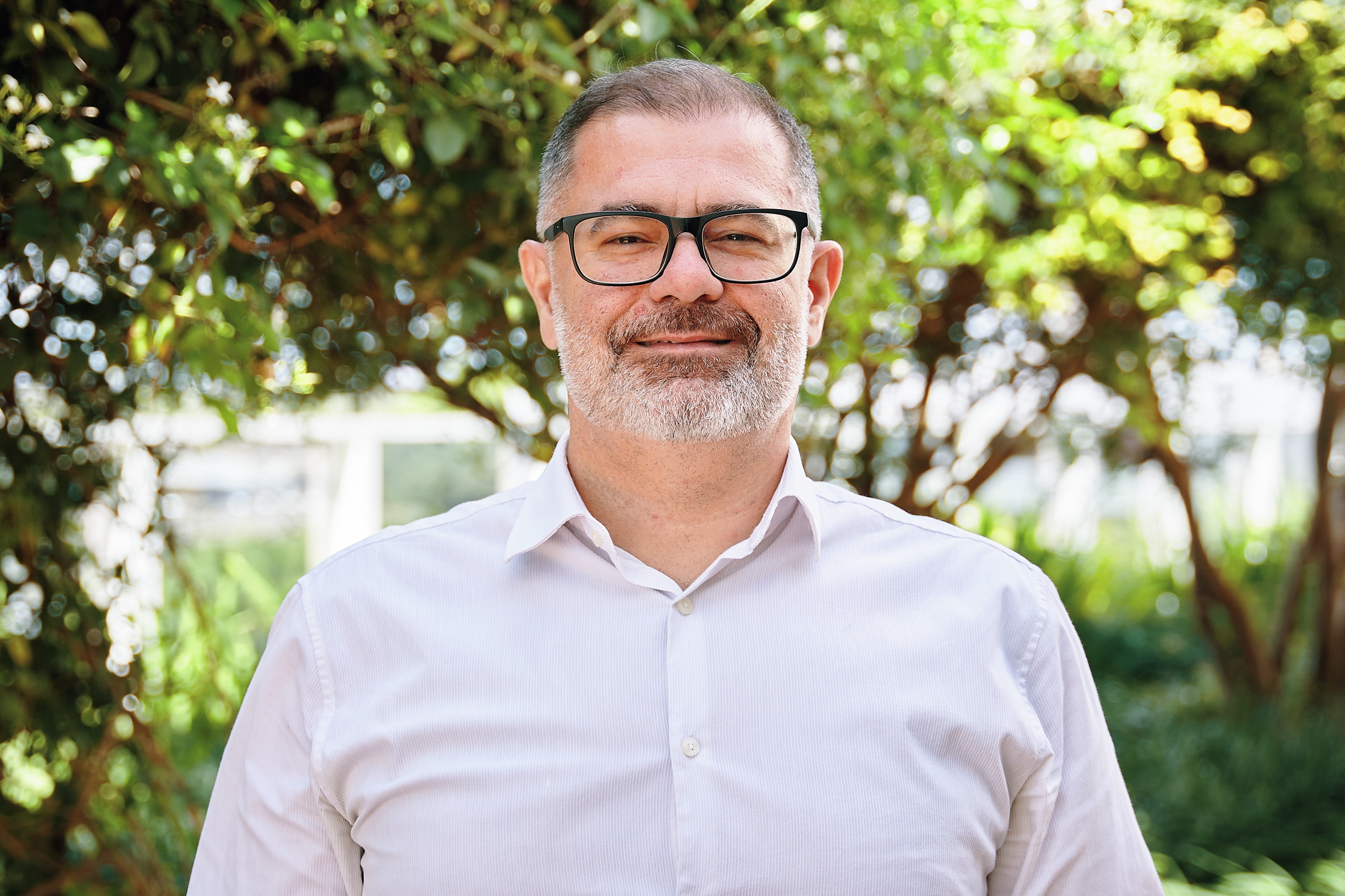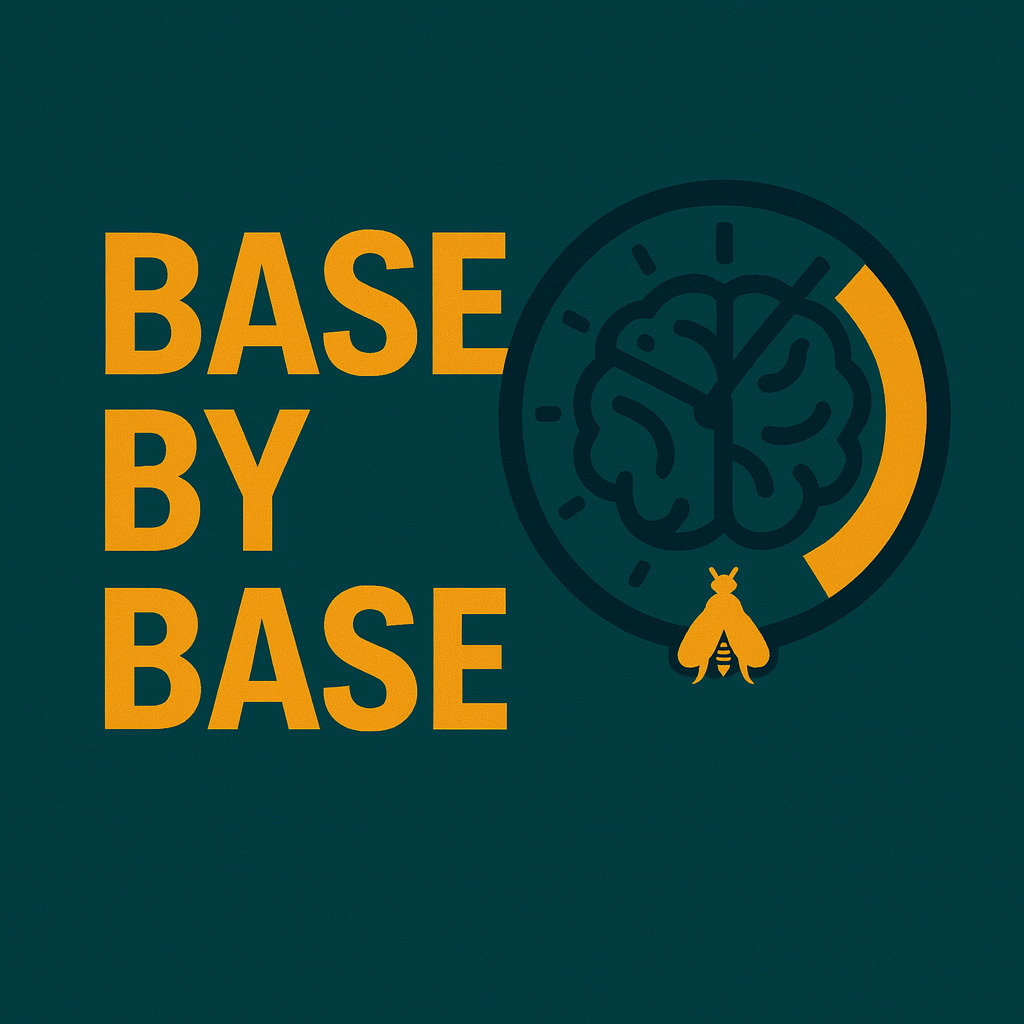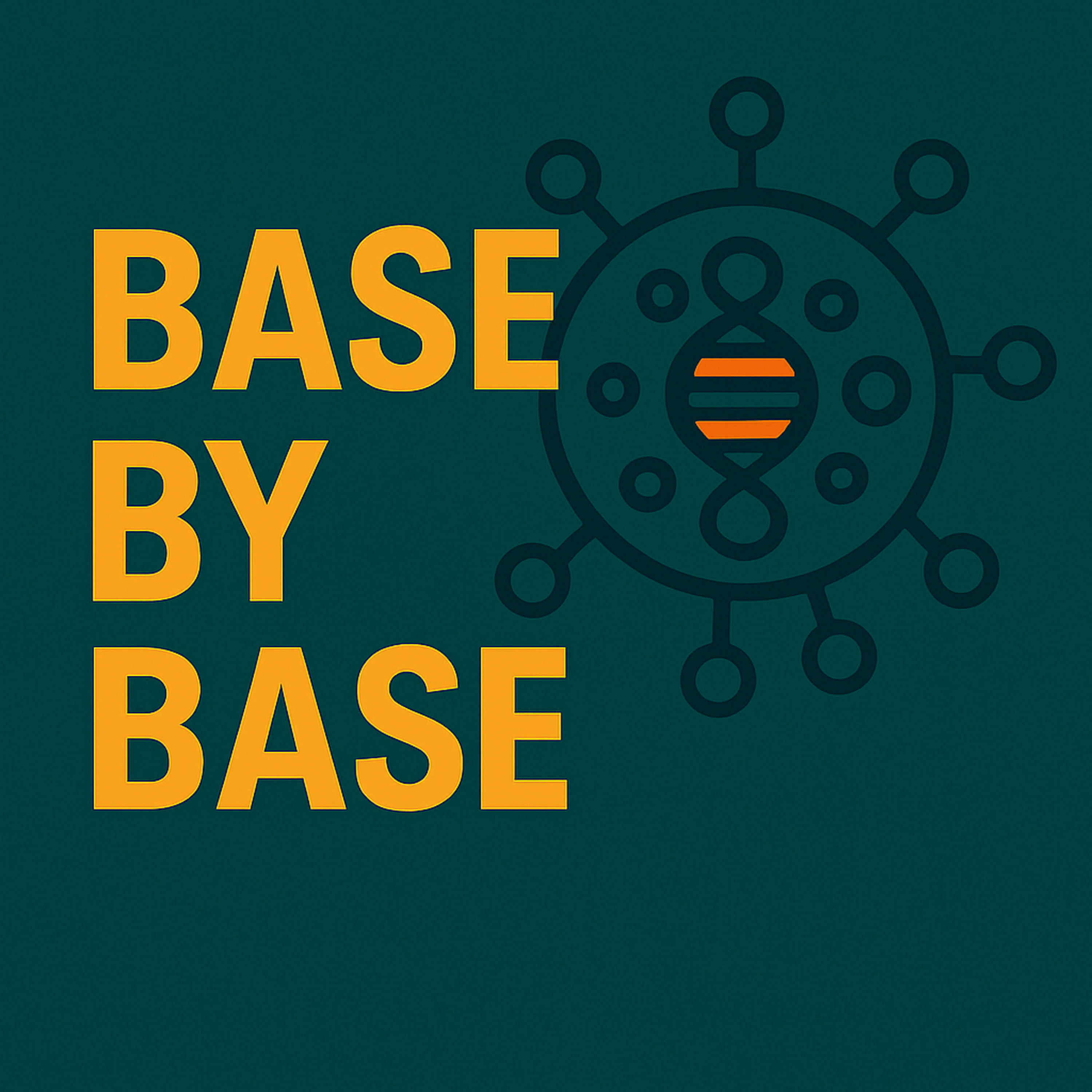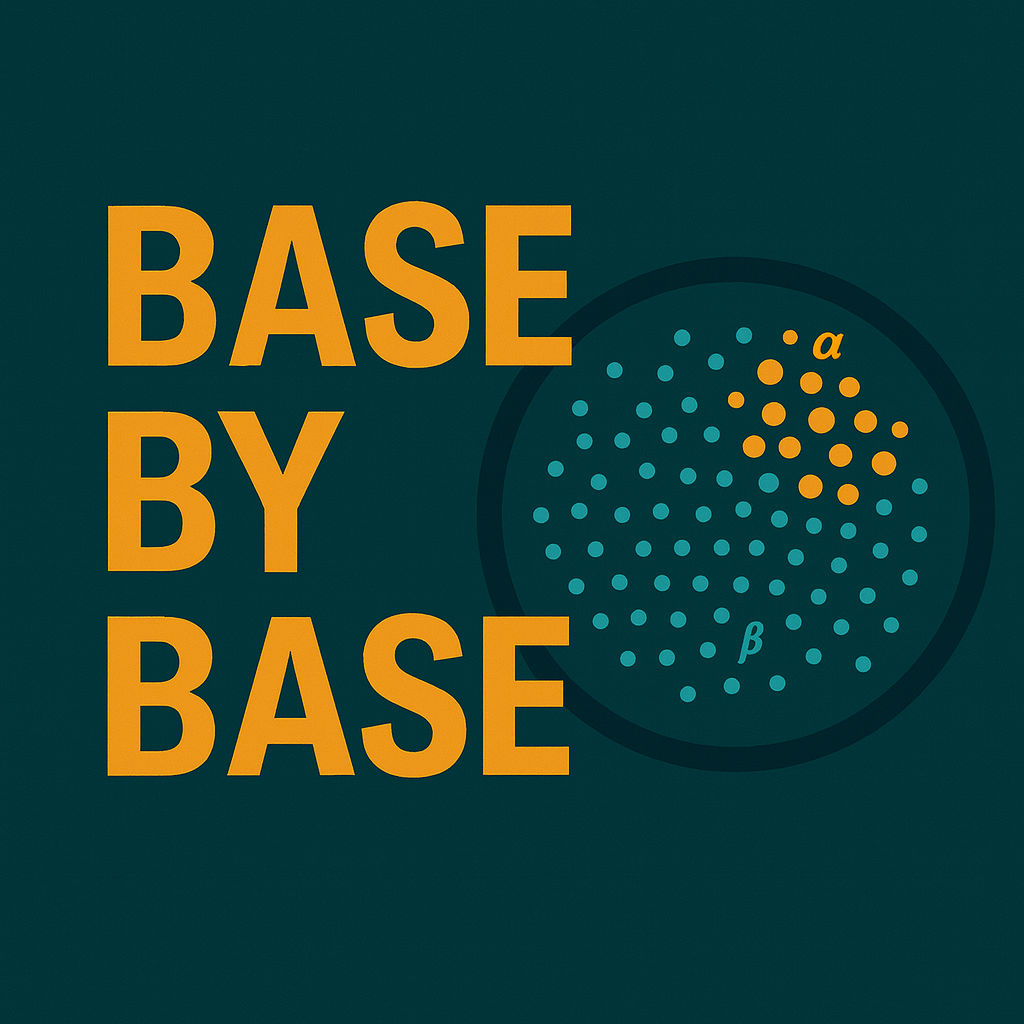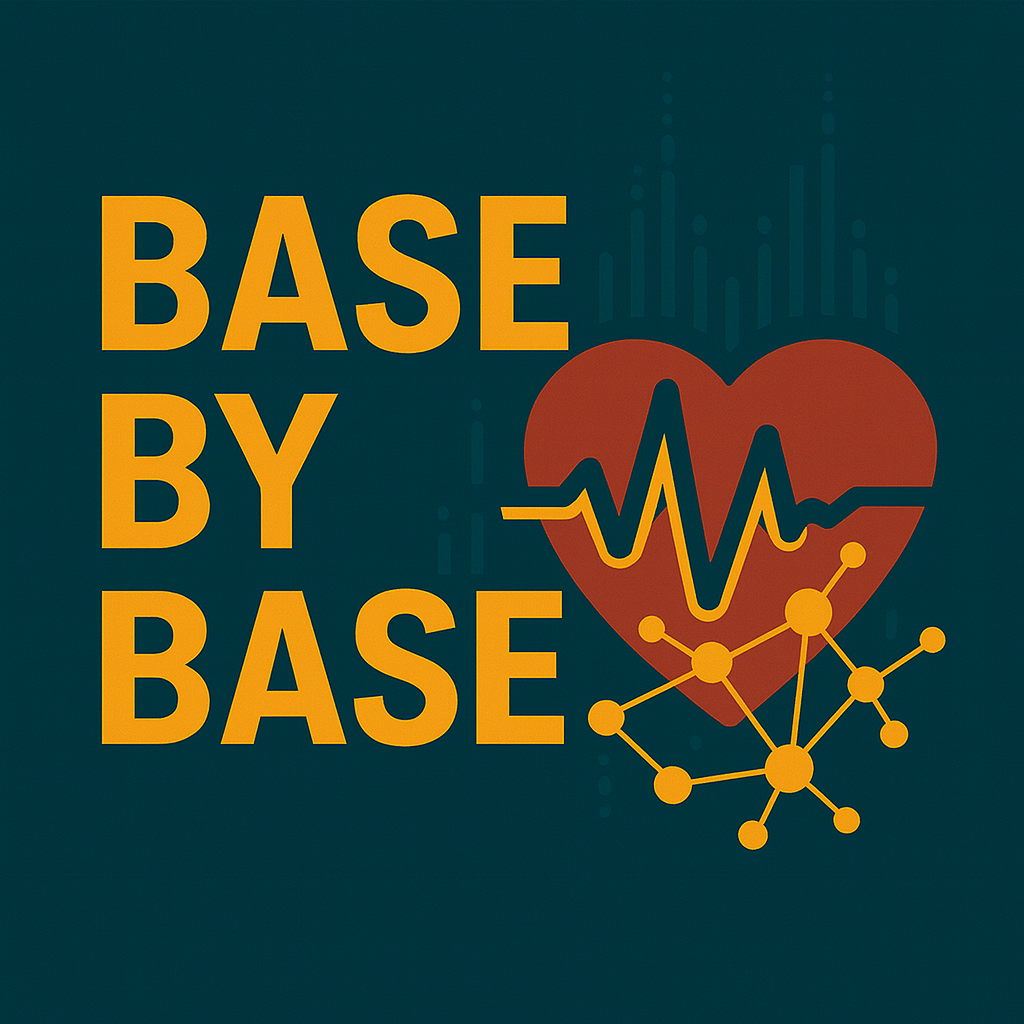Episode Transcript
[00:00:00] Speaker A: Foreign.
[00:00:14] Speaker B: Welcome to Base by Base, the papercast that brings genomics to you wherever you are. Imagine for a moment a child whose daily life is. Well, it's a constant battle. They face significant hurdles in learning and development, maybe exhibit a peculiar combination of physical traits. Perhaps they're unusually tall, or their joints are far too flexible. And they endure these persistent sleep problems that just don't respond to typical solutions. These kinds of complex, interconnected challenges, often grouped under the umbrella of neurodevelopmental disorders. They can be incredibly isolating and perplexing, you know, for families and clinicians alike, everyone searching for answers, really trying to understand the root cause of such a unique mix of symptoms.
It makes you wonder, doesn't it? What if some of these profound and seemingly disconnected issues, from developmental delays and cognitive difficulties, even conditions like autism spectrum disorder, what if they could ultimately be traced back to something as fundamental as our body's internal clock? You know, that sophisticated biological rhythm that dictates when we sleep, when we wake, and orchestrates countless vital processes throughout our entire system. How could something seemingly so basic have such far reaching developmental consequences?
So today, we're going to dive into some truly groundbreaking new research that unveils a surprising and frankly, incredibly profound link. It connects a crucial gene deep within this very circadian rhythm machinery directly to a previously unrecognized neurodevelopmental syndrome. This isn't just about whether you're a morning person or a night owl. I mean, it's about a core genetic mechanism fundamentally shaping human development itself from the inside out. And we really want to celebrate the remarkable efforts of an international team today, spearheaded by researchers from Baylor College of Medicine, the University of Pennsylvania, and other global institutions as well. Their collaborative work has significantly advanced our understanding of the genetic underpinnings of neurodevelopmental disorders, particularly shining a light on the critical role of the BMA1 gene.
[00:02:08] Speaker A: Yeah, it's something that's often overlooked, but it's quite striking, actually. Children with neurodevelopmental disorders frequently experience significant sleep disturbances and broader disruptions to their circadian rhythms. But despite these clear observations in the clinic, the precise genetic mechanisms linking these two fundamental areas, neurological development and our internal biological timing, well, they've remained largely a mystery. This study truly set out to bridge that exact gap.
[00:02:35] Speaker B: Okay. Right. So let's unpack this core concept of the molecular clock for a moment. Then our bodies, I mean, down to our individual cells, possess this incredibly intricate 24 hour internal. Internal timekeeper, like a master clock, synchronizing almost everything. Now this molecular circadian clock you mentioned, it's primarily driven by a delicate dance between specific proteins, transcription factors. The key players today are BIML1 and Clock. Can you quickly explain how they, you know, kickstart this whole rhythmic cascade?
[00:03:05] Speaker A: Absolutely, yeah. So BMAL1 and CLOCA are like the primary gears in this intricate clockwork. They don't act alone. They join forces, forming what's called a heterodimer, essentially a working pair of proteins. They together, this pair then latches onto very specific control sections of our DNA. These areas often called E boxes. You can think of these E boxes as genetic on switches. Really? When BMA1 and CLLCA bind there, they kickstart the process of transcription, actively promoting the expression of other genes, particularly those in the PER and CRY families. So yeah, they're basically turning on the next phase of the clock. Okay, so bmal1 and clck are the conductors starting the rhythm. And then what happens next? Ah, that's where the elegant feedback loop comes in. Once those prncry proteins are produced, they don't just, you know, sit around, they actually turn around and actively block the very transcriptional activation that BML01NCLOCK initiated. Oh wow.
[00:03:59] Speaker B: So it regulates itself.
[00:04:00] Speaker A: Exactly. It's a self regulating system. This negative feedback loop where the products of the clock genes inhibit their own activators. Takes approximately 24 hours to complete.
This constant, really beautiful cycle of activation and inhibition forms the fundamental backbone of our daily timekeeping, ensuring our biological rhythms stay synchronized to the day, night cycle. And the critical insight here is if even one of these conductors is off key, it doesn't just disrupt a single tune, it can potentially throw off the rhythm of our entire biological system.
[00:04:31] Speaker B: Right, and we've actually learned in previous research that variants in other clock genes like PR2, PR3, CRI1, CRY2, they can cause specific kind of isolated circadian phenotypes, mostly affecting sleep timing. Right. Like advanced or delayed sleep.
[00:04:46] Speaker A: Correct. Those are often purely sleep related issues.
And this raises an important question, doesn't it? While those known clock gene variants can indeed cause distinct sleep issues, they don't typically present with broader systemic developmental features. They seem more localized to sleep.
So this new study specifically asked a much bigger question.
Could a subset of individuals struggling with neurodevelopmental disorders actually have genetic variants in these core circadian rhythm genes, but with a much wider, more profound impact than just affecting sleep?
It was essentially looking for a systemic developmental connection, not just a sleep problem.
[00:05:23] Speaker B: That's a fascinating pivot. So how did this team actually go about finding these individuals? I mean, with these rare genetic links, how do you even start looking?
[00:05:31] Speaker A: Well, they cast a remarkably wide net, actually. They leveraged international gene matching efforts, specifically platforms like genematcher. These allow clinicians and researchers from all over the world to connect patients who might have similar rare genetic profiles.
They also meticulously reviewed existing published cohorts of individuals with various genetic conditions. And through this extensive global collaboration, they managed to identify 10 individuals who all harbored these ultra rare heterozygous variants in BMA1, that central clock component.
[00:06:05] Speaker B: We just talked about 10 individuals. And what was special about these particular variants? Were they inherited or.
[00:06:11] Speaker A: Well, intriguingly, five of these 10 variants were de novo. That's a really critical detail.
[00:06:15] Speaker B: De novo meaning new?
[00:06:17] Speaker A: Exactly. De novo means they appeared for the first time in the affected individual, not inherited from either parent. And if we put this into broader context, the researchers then analyzed these vast genetic databases like nomaea, which compiles genetic sequencing data from diverse populations, and what they found was truly significant. BMAL1 is a highly constrained gene, meaning it's remarkably intolerant to changes, particularly those that might lead to a complete loss of function or even subtle missense variations that just alter a single amino acid.
This constraint strongly suggested that the rare variants they identified were very likely to have significant functional consequences on the protein's activity.
Basically, the gene is just too important to be messed with without serious effects.
[00:07:01] Speaker B: That makes perfect sense. If a gene is constrained, its function must be absolutely vital. So what kinds of these ultra rare variants did the team actually find within BMAL1, and where were they located in the gene?
[00:07:13] Speaker A: They found a mix, actually. There were three missense variants which subtly change a single amino acid in the protein sequence. And then there were seven variants predicted to cause a frameshift or premature truncation of the protein, which essentially means the protein is cut short or basically rendered non functional. Critically, these variants were consistently found in crucial parts of the Bmal1 protein, such as the Pal1 domain. Now, this domain, to put it simply, is absolutely essential for BML1 to bind correctly with CLOKK and form that functional heterodymer pair we talked about.
[00:07:50] Speaker B: Oh, okay.
[00:07:51] Speaker A: They also occurred at highly conserved amino acid residues, meaning these specific spots are critical for function and have been maintained across many different animal species throughout evolution. It's like finding a flaw in the very core design of a precision machine, you know?
[00:08:05] Speaker B: Right. A fundamental piece. So they identified these worrying variants in critical regions, but finding a variant is one thing. Understanding its Actual impact. That's another challenge. How do they move from just finding the variant to proving it had functional consequences, say, at the cellular level?
[00:08:20] Speaker A: Yeah, exactly. To truly pinpoint the impact, the researchers got very clever. They conducted rigorous functional testing in cultured human cells. They essentially gave human U2OS cells a kind of mini internal clock that would glow with light.
[00:08:34] Speaker B: Grow. How?
[00:08:36] Speaker A: Well, specifically, these cells were engineered to express a PER2 promoter driven Luciferase reporter. A PER2 is a well established target gene whose rhythmic expression is controlled by BMAL1.
By synchronizing these cells and then meticulously measuring the rhythmic light emission from the luciferase, they could visually track how rhythmically the clock genes were working.
By observing how these BMAL1 variants affected this light show, they could precisely assess changes in the circadian period, like how fast the clock runs, its phase, its timing and its amplitude, the strength of its signal. They even went further and quantified per 2mrna cycling directly to confirm these acute effects at the molecular level.
[00:09:14] Speaker B: That's a brilliant way to actually see the clock in action within a cell. But wait until you hear this to understand the full systemic impact affecting a whole living organism and its behavior, including things like memory. Where did the researchers turn next? How do you test that?
[00:09:30] Speaker A: That's where the fruit fly Drosophila melanogaster came into play. It's a fascinating and really powerful animal model for studying genetics and behavior. The Drosophila gene cycle, or psych, is the highly homologous ortholog of human BMAL1.
[00:09:46] Speaker B: Meaning they're very similar genes doing similar jobs.
[00:09:49] Speaker A: Exactly. They share a common evolutionary origin and perform very similar functions. This similarity allowed the researchers to move beyond cell cultures and study the genetic changes in a dynamic living system.
[00:10:00] Speaker B: So they essentially created variant flies. What exactly did they do with them?
[00:10:03] Speaker A: Precisely? They modeled two key human BML1 variants within the fly's CYC gene. One represented a gain of function mutation, where the protein's activity is basically enhanced or altered. And another represented a loss of function mutation where its activity is reduced or abolished. They then created transgenic flies expressing these variant psych genes. These flies were rigorously tested for altered behavioral rhythms, first in constant darkness and then under normal light dark cycles to see how their daily activity patterns were affected.
But here's the crucial part. They also underwent aberrant conditioning experiments, essentially teaching flies to associate a specific odor with a sweet reward. This allowed them to assess deficits in both short term and long term memory. This powerful in vivo or in the living organism approach allowed them to See, the systemic impact of these gene changes, linking the molecular clock directly to complex behaviors like learning and memory.
[00:10:57] Speaker B: Okay, and this is where the puzzle pieces really start to click together in a compelling way. Right.
What did the researchers observe when they looked at the actual clinical profiles of the humans with these BMA1 variants? What kind of syndrome actually emerged from the data?
[00:11:12] Speaker A: It was strikingly consistent, really, pointing to a distinct and recognizable syndrome. All individuals for whom phenotypic information was available. That's 8 out of 8 cases. 100% exhibited developmental delay.
[00:11:25] Speaker B: Every single one?
[00:11:26] Speaker A: Every single one with data available. And this is often global delay, impacting multiple domains like speech and motor skills. Beyond that, a significant number, six individuals in the cohort also presented with autism spectrum disorder, and seizures were noted in 50% of cases. So, yes, severe neurodevelopmental challenges were clearly a hallmark.
[00:11:45] Speaker B: So definitely a strong neurodevelopmental component. But did the syndrome extend beyond just the brain? Were there any other, maybe physical features that tied these individuals together?
[00:11:55] Speaker A: Yes, and what's truly fascinating here is that the syndrome did extend beyond purely neurodevelopmental issues.
A significant proportion of the cohort, that's 66% of individuals with available history, also showed distinct musculoskeletal phenotypes.
[00:12:11] Speaker B: Like what?
[00:12:12] Speaker A: This included things like a Marfanoid habitus, which means they had tall stature with long, slender limbs, or joint hypermobility with hypotonia, which translates to abnormally flexible joints, combined with low muscle tone.
These physical features really hint at a broader systemic role for BMAL1 in development, suggesting it affects not just the brain, but potentially connective tissues throughout the body as well.
[00:12:34] Speaker B: That's a really wide ranging impact. You mentioned earlier that many of these variants were de novo new mutations. But what are the ones that were inherited? Did that shed any more light on how this syndrome presents in families?
[00:12:45] Speaker A: Right, so when inheritance could be confirmed for these BML1 variants? Yeah, a substantial majority, 71%, or five out of seven cases, were indeed de novo. However, in some fascinating cases, there was evidence of maternal or paternal inheritance. For instance, one variant was inherited from a mother with a history of postpartum depression, and other family members had histories of learning difficulties or mood disorders.
[00:13:09] Speaker B: Interesting.
[00:13:10] Speaker A: And another variant was inherited from a father who had a learning disability in cirrhetics.
This really hints at what we call variable penetrance or expressivity of the syndrome.
[00:13:20] Speaker B: Meaning?
[00:13:21] Speaker A: Meaning the same genetic variant can cause different degrees of severity or maybe a slightly different set of symptoms in different individuals, even within the same Family. It's not always a straightforward one to one predictable outcome.
[00:13:33] Speaker B: It sounds like a complex interplay then. Now let's go back to those cell culture experiments for a second. What did they actually show about how these BML1 variants messed with the cellular clock mechanism?
[00:13:43] Speaker A: Yeah, the cell culture experiments showed that all nine tested BML1 variants did disrupt protein function, but interestingly, with varying effects. This kind of aligns with the variable expressivity we just talked about. Some variants, like the frame shift and splice site ones, led to a significant shortening of the circadian period. The clock basically ran faster, dropping from a normal 24.4 hours down to about 23.5 or 23.6 hours, where they caused a shift in its phase. This was consistent with a loss of function mechanism and decreased PER2 transcription.
[00:14:15] Speaker B: Okay, so clock running too fast.
[00:14:16] Speaker A: Right, but here's a twist. One missense variant PIL201THERR actually led to an enhancement of circadian amplitude.
[00:14:23] Speaker B: So a stronger clock signal indicating a.
[00:14:25] Speaker A: Potential gain of function. Yeah, they also found that some of the truncating variants resulted in about a 50% reduction in the amount of Bmal1 protein expressed. Crucially, though, the variants didn't seem to significantly impair BMAO1's ability to bind to clock or its localization within the cell. This suggests the issue wasn't the assembly of the core clock complex itself itself, but rather how that complex actually functions to regulate gene expression once it's assembled.
[00:14:51] Speaker B: Fascinating. So both too little bmal1 function, and maybe too much or at least altered function can disrupt the clock.
How did these nuanced cellular findings translate to the whole living organisms? The fruit flies? Did the fly results match up?
[00:15:05] Speaker A: They really did. Moving to the fly models, the in vivo results largely recapitulated these cellular findings, which provided powerful validation.
The psyched gain of function variant page I161T, actually seemed to improve behavioral rhythmicity in constant darkness, in some ways making the flies perhaps more rhythmic than the wild type flies by certain measures.
[00:15:25] Speaker B: Huh. Stronger rhythm.
[00:15:27] Speaker A: But in stark contrast, the loss of function variant severely impaired rhythmicity.
And interestingly, it impaired it even more so than just having no CYT gene at all. This suggested a dominant negative effect.
[00:15:41] Speaker B: Dominant negative meaning?
[00:15:42] Speaker A: Meaning the mutant protein wasn't just inactive. It seemed to be actively interfering with any remaining normal protein function, causing even greater disruption overall.
[00:15:52] Speaker B: Wow. And what about that memory component you mentioned earlier? That's such a key neurodevelopmental phenotype in humans. Did the fly studies connect to that.
[00:16:00] Speaker A: Yes, and this is a really crucial finding. I think it helps close the loop on the cognitive deficits seen in the human cohort.
Both the gain of function psych variant and the dominant negative loss of function psych variant significantly impaired both short term and long term aptitude memory.
[00:16:18] Speaker B: In the flies, both gain and loss of function affected memory both.
[00:16:23] Speaker A: This directly linked the BML1 genetic variants not just to altered circadian rhythms, but to a key neurodevelopmental phenotype cognitive deficit.
This strongly suggests that the impact of these variants goes beyond just the clock itself and has direct implications for fundamental brain function.
[00:16:40] Speaker B: That's a really profound connection. So if we kind of zoom out for a moment, what does this study really tell us about the bigger picture about neurodevelopmental disorders and circadian rhythms?
[00:16:50] Speaker A: Well, what this study powerfully demonstrates, I think, is that pathogenic variants in a core Circadian clock gene, Bmal1, can directly contribute to a Mendelian neurodevelopmental disorder, a specific inherited condition. This significantly expands our understanding beyond just isolated sleep issues to a complex syndrome impacting development, cognition, and even those distinct physical traits like the musculoskeletal features we discussed. It fundamentally reframes BML1's role in human health.
[00:17:17] Speaker B: It certainly does. And it makes me wonder about the why behind the memory issues. You know, the ones observed in the flies and the cognitive challenges in the human cohort. Is it pure purely a consequence of a messed up internal clock, or could something else be at play?
[00:17:31] Speaker A: That's a critical question and one for future research. Definitely. The memory impairment observed in the fruit flies raises this important point.
Is it solely due to disrupted molecular timekeeping? Or does BMA1 perhaps have other non clock mediated roles in neuronal development or function? The paper does highlight that bmal1 and its fly ortholic psych are known to influence cellular morphogenesis, basically how cells develop their shape and structure. And they also modulate other transcription factors. So this hints that its role might be far more complex than just setting the clock. It could be directly involved in fundamental brain development processes and how neurons actually form connections.
[00:18:11] Speaker B: That distinction is really important. And how do These rare profound BMA1 variants compare to the more common genetic variations in BMAL1 that we sometimes hear about in relation to other health issues.
[00:18:22] Speaker A: Right, That's a good point.
This finding is particularly important when we contrast it with common BMAL1 variants.
Those have been associated, sometimes weakly, with various human disorders like insulin resistance or cardiovascular health, but they generally lead to relatively Small phenotypic effects.
These rare variants, however, they have profound and direct impacts. It really underscores the immense value of sophisticated genetic sequencing techniques in diagnosing these complex, often puzzling conditions.
The study also looked at large microdeletions that happen to include the BMAL1 gene using the Decipher database. And they found similar neurodevelopmental and marfanoid features in those individuals too, further supporting BMAL1's critical and widespread role.
[00:19:07] Speaker B: Okay.
The paper also touched on a potential paradox regarding sleep difficulties and seizures in the humor cohort. Given the strong link to circadian rhythms, wouldn't you expect, like all these individuals, to have diagnosed sleep problems?
[00:19:19] Speaker A: It's true. You might expect that while sleep problems are highly prevalent in children with autism, generally affecting maybe up to 80%, only a subset of individuals in this specific BMAO1 cohort had formal diagnoses of sleep issues.
[00:19:34] Speaker B: Hmm.
[00:19:35] Speaker A: This raises an important question.
Is it possible that sleep disturbances are actually under diagnosed in these complex cases? Maybe they get overshadowed by the other more overt developmental challenges? Or perhaps the nature of the sleep disruption is different, maybe less obvious than typical insomnia.
[00:19:52] Speaker B: That makes sense.
[00:19:53] Speaker A: And regarding seizures, which affected 50% of the individuals here, the study noted that BMA1 knockout mice, mice completely lacking the gene, show increased susceptibility to seizures. This aligns perfectly with the human findings and strongly suggests a direct link between BMA01 function and seizure risk.
[00:20:10] Speaker B: So many layers of implication here. What's the most exciting corollary or perhaps the next step that comes out of these findings for future research or maybe even clinical practice down the line?
[00:20:19] Speaker A: Well, this raises a truly important question. I think for both areas, an exciting corollary of these findings is the possibility that early and aggressive treatment of sleep or circadian disruption, even if you're not targeting the primary BMA1 variant itself directly, might actually help decrease the severity of the neurodevelopmental disease.
[00:20:39] Speaker B: Really treating the sleep could help the development.
[00:20:42] Speaker A: That's the potential implication. If improving behavioral rhythmicity, getting the sleep wake cycle more stable, can actually improve neurodevelopmental outcomes, this could have broad applicability to many neurodevelopmental disorders, far beyond just those rare cases with Bmal1 variants. It suggests a whole new avenue for potential intervention strategies focused on the clock.
[00:21:03] Speaker B: Okay, so for our take home message today, it seems that rare variants in this core Circadian clock gene, Bmal1, are associated with the distinct and recognizable neurodevelopmental syndrome. This syndrome is characterized not only by developmental delay and autism spectrum disorder, but also by unique physical features impacting the musculoskeletal system.
[00:21:21] Speaker A: Exactly. And these genetic changes don't just subtly disrupt our internal timekeeping, they seem to profoundly impair cognitive functions like memory. This highlights the multifaceted and critical role of circadian genes in overall brain development and function, revealing a much deeper impact than perhaps we previously understood.
[00:21:40] Speaker B: So what does this mean for our entire approach to understanding and maybe eventually treating neurodevelopmental disorders? It really shines a powerful new light on the fundamental, but maybe often overlooked role of our internal clock, doesn't it? This episode was based on an Open Access article under the CC BY 4.0 license. You can find a direct link to the paper and the license in our episode. Description if you enjoyed this, follow or subscribe in your podcast app and leave a five star rating. If you'd like to support our work, use the donation link in the description. Thanks for listening and join us next time as we explore more science base by base.
